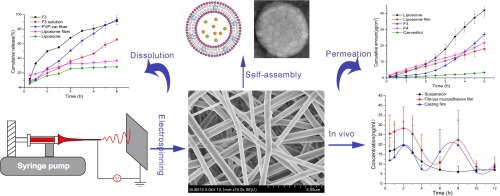- Home
- Blog
- News
- Basics
- Sources
- Agencies, Regulatory & Organisations
- CERSI Excipients Browser
- Excipient Report
- Excipient DMF List
- EXCiPACT Certified Companies
- Excipient Documentation
- Excipient EINECS Numbers
- Excipient E-Numbers
- FDA Inactive Ingredient List
- FDA GRAS Substances (SCOGS) Database
- IPEC Americas
- USP - U.S. Pharmacopeia
- Definitions
- Whitepapers / Publications
- Supplier
- Services
- Media
- Events
- 1st pharmaexcipients Poster Award
- Event Calendar
- Events featured by pharma-excipients
- 4th Annual Formulation & Drug Delivery Congress
- DDF Summit
- ExcipientFest Americas
- ExcipientFest Asia
- Global CompliancePanel
- International Conference and Exhibition on Pharmaceutics & Novel Drug Delivery Systems
- Formulation & Drug Delivery USA Congress
- Laboratory Medicine 2018
- Making Pharmaceuticals Europe
- Making Pharmaceuticals Exhibition
- Pharma Integrates
- PharmaExcipients China @CPhI China
- TTC Technology Training Center
- Jobs
- Online Sourcing
- Contact
02. June 2018
The aim of the study is the evaluation of the impact of glyceryl ester surfactants on cell permeating properties of SEDDS (self-emulsifying drug delivery systems). Methods SEDDS containing the glyceryl ester surfactants polyglyceryl-3-stearate (TGlysurf9), polyglyceryl-5-oleate (TGlysurf11.5) and glyceryl stearate citrate (TGlysurf12) were prepared and characterized regarding droplet size and zeta potential. Toxicity studies were performed on Caco-2 cells using resazuring assay. The...
30. May 2018
A novel delivery system based on self-assembled liposome from multi-layered fibrous mucoadhesive membrane has been developed to improve the bioavailability of Carvedilol (Car). This system consisted of an electrospun layer (enable self-assembly of liposome once contacting with water), an adhesive layer (prolong the retention period in the mouth) and a backing layer . SEM、 DSC and FTIR were applied to characterize the fiber. The TEM and fluorescence study demonstrated the formation of...
17. May 2018
Pharmaceutical excipients that may affect gastrointestinal (GI) drug absorption are called critical pharmaceutical excipients (CPEs), or absorption-modifying excipients (AMEs) if they act by altering the integrity of the intestinal epithelial cell membrane. Some of these excipients increase intestinal permeability, and subsequently the absorption and bioavailability of the drug. This could have implications for both the assessment of bioequivalence and the efficacy of the absorption-enhancing...
20. September 2017
Aerosolized administration of biopharmaceuticals to the airways is a promising route for nasal and pulmonary drug delivery, but − in contrast to small molecules − little is known about the effects of aerosolization on safety and efficacy of biopharmaceuticals. Proteins are sensitive against aerosolization-associated shear stress. Tailored formulations can shield proteins and enhance permeation, but formulation development requires extensive screening approaches. Thus, the aim of this study...
16. March 2017
Abstract It is one of the best pharmaceutical dosage forms for those patients, they cannot take medicaments orally. Transdermal drug delivery system (TDDS) established itself as an integral part of novel drug delivery systems (NDDS). On the application of Transdermal patches, the delivery of the drug across dermis gives the systemic effect. TDDS is costly alternative to conventional formulation. It is also important due to its unique advantage. Controlled absorption, more uniform plasma levels,...
08. March 2017
Abstract Tenofovir, currently marketed as the prodrug tenofovir disoproxil fumarate, is used clinically to treat patients with HIV/AIDS. The oral bioavailability of tenofovir is relatively low, limiting its clinical effectiveness. Encapsulation of tenofovir within modified long-circulating liposomes would deliver this hydrophilic anti-HIV drug to the reticuloendothelial system for better therapeutic efficacy. The objectives of the current study were to prepare and pharmaceutically characterize...
30. October 2016
Abstract Diclofenac topical formulations are often preferred for drug administration to patients who experience serious GIT problems. Absorption of the drug through the skin, however, can be challenging due to the natural protective feature of the stratum corneum (SC). In this article, fluid gels prepared from gellan gum were explored as a topical drug delivery vehicle. Rheological analysis of the formulations showed that it was possible to produce a topical gel with a viscosity and the...
24. June 2016
Abstract The aim of this study was the development of zeta potential changing self-emulsifying drug delivery systems (SEDDS). Various cationic surfactants were incorporated into a formulation consisting of 30% Cremophor EL, 30% Capmul MCM, 30% Captex 355 and 10% propylene glycol (w/w). A substrate of intestinal alkaline phosphatase (IAP), 1,2-dipalmitoyl-sn-glycero-3-phosphatidic acid sodium (PA), was thereafter incorporated into SEDDS. Size, zeta potential and polydispersity index were...
23. June 2016
Abstract Intestinal permeation enhancers (PEs) are one of the most widely tested strategies to improve oral delivery of therapeutic peptides. This article assesses the intestinal permeation enhancement action of over 250 PEs that have been tested in intestinal delivery models. In depth analysis of pre-clinical data is presented for PEs as components of proprietary delivery systems that have progressed to clinical trials. Given the importance of co-presentation of sufficiently high...
14. June 2016
In the process of implementation and innovation of paediatric dosage forms, buccal films for transmucosal administration of drug represent one of the most interesting approach. In fact, films are able to provide an extended duration of activity allowing minimal dosage and frequency and offer an exact and flexible dose, associated with ease of handling. The objective of the present study was to develop polymeric films for the sustained release of ondansetron hydrochloride, a selective inhibitor...





